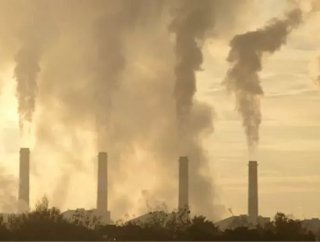EPA Proposes Clean Air Act Standards

The U.S. Environmental Protection Agency today proposed Clean Air Act standards to cut carbon pollution from new power plants in order to combat climate change and improve public health.
In addition, EPA has initiated broad-based outreach and direct engagement with state, tribal, and local governments, industry and labor leaders, non-profits, and others to establish carbon pollution standards for existing power plants and build on state efforts to move toward a cleaner power sector.
Today’s proposal achieves the first milestone outlined in President Obama’s June 25 Memorandum to EPA on “Power Sector Carbon Pollution Standards,” a major part of the President’s Climate Action Plan.
“Climate change is one of the most significant public health challenges of our time. By taking commonsense action to limit carbon pollution from new power plants, we can slow the effects of climate change and fulfill our obligation to ensure a safe and healthy environment for our children,” EPA Administrator Gina McCarthy said. “These standards will also spark the innovation we need to build the next generation of power plants, helping grow a more sustainable clean energy economy.”
Under today’s proposal, new large natural gas-fired turbines would need to meet a limit of 1,000 pounds of CO2 per megawatt-hour, while new small natural gas-fired turbines would need to meet a limit of 1,100 pounds of CO2 per megawatt-hour.
New coal-fired units would need to meet a limit of 1,100 pounds of CO2 per megawatt-hour, and would have the option to meet a somewhat tighter limit if they choose to average emissions over multiple years, giving those units additional operational flexibility.
These proposed standards will ensure that new power plants are built with available clean technology to limit carbon pollution, a requirement that is in line with investments in clean energy technologies that are already being made in the power industry.
Additionally, these standards provide flexibility by allowing sources to phase in the use of some of these technologies, and they ensure that the power plants of the future use cleaner energy technologies -- such as efficient natural gas, advanced coal technology, nuclear power, and renewable energy like wind and solar.
In response to recent information and developments in the power sector and more than 2.5 million public comments, including those from the power sector and environmental groups, today’s proposal sets separate standards for new gas-fired and coal-fired power plants.
Power plants are the largest concentrated source of emissions in the United States, together accounting for roughly one-third of all domestic greenhouse gas emissions. Currently, nearly a dozen states have already implemented or are implementing their own market-based programs to reduce carbon pollution. In addition, more than 25 states have set energy efficiency targets, and more than 35 have set renewable energy targets. While the United States has limits in place for arsenic, mercury and lead pollution that power plants can emit, currently, there are no national limits on the amount of carbon pollution new power plants can emit.
In 2009, EPA determined that greenhouse gas pollution threatens Americans' health and welfare by leading to long lasting changes in the climate that can have a range of negative effects on human health and the environment. Taking steady, responsible steps to cut carbon pollution from new and existing power plants will protect children’s health and will move the country toward a cleaner, more stable environment for future generations, while supplying the reliable, affordable power needed for economic growth.
The agency is seeking comment and information on today’s proposal, including holding a public hearing, and will take that input fully into account as it completes the rulemaking process. EPA’s comment period will be open for 60 days following publication in the Federal Register. In a separate action, EPA is rescinding the April 2012 proposal.
Separately, EPA has initiated outreach to a wide variety of stakeholders that will help inform the development of emission guidelines for existing power plants. EPA intends to work closely with the states to ensure strategies for reducing carbon pollution from existing sources are flexible, account for regional diversity, and embrace common sense solutions, allowing the United States to continue utilizing every fuel source available. In accordance with the June 25 Presidential Memorandum, EPA will issue proposed standards for existing power plants by June 1, 2014.






